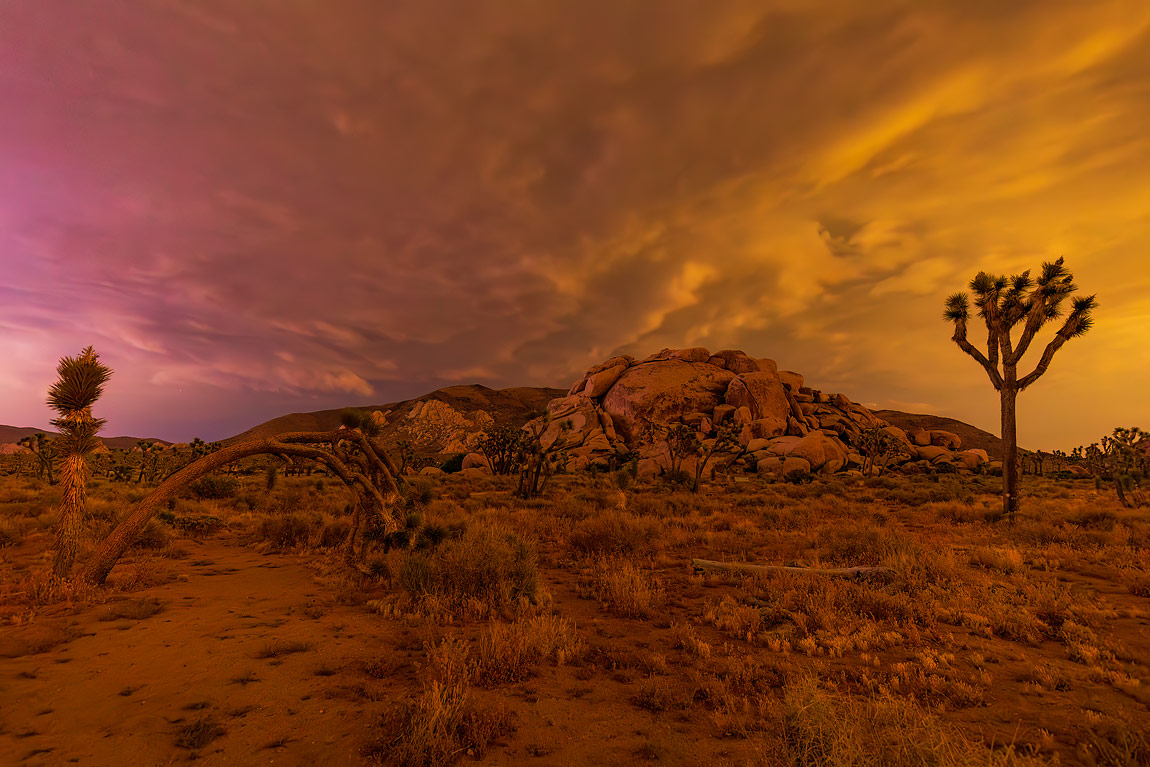One of my favorite places to photograph the Milky Way is Joshua Tree National Park, and since I live in North County, San Diego, it is only a short 3-hour drive to the park.
The time was just right, and with a Black Moon, aka, New Moon, I knew that the night sky would be at its darkest and an excellent opportunity for some astrophotography.
The first night of photographing was awesome; we spent hours moving from one location to another. The next night was the peak of the New Moon, and we were excited to continue capturing the night sky. However, with a check of our app Clear Outside, we knew that we only had a short window to photograph between midnight and 2 am.
As midnight passed, we started to notice – well, it wasn’t hard to notice – the flashes of lightning in the sky just to the southeast of our location. We took a little time to get set up – I had just purchased my first star tracker, and I was having slight difficulty finding Polaris – and after I took a few images, it was understandable why I was having difficulty. The first couple of photos I shot away from the storm, but the foreground just didn’t really pop, so I turned my camera towards a large rock formation just behind Cap Rock.
The result of the first photograph told the story of what was to come; the color on the left is the remnants of a lightning strike, and the cotton candy sky soon brought more rain than I have seen in a long time.
After two frantic runs to the truck to stow our gear, we knew our night of astrophotography was over.


